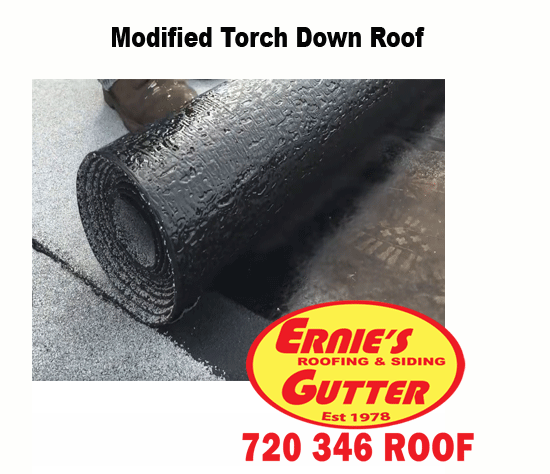Roof replacement is not just a cosmetic upgrade; it is essential for the structural integrity of your home. A damaged or aging roof can lead to leaks, water damage, mold growth, and even structural issues. By replacing your roof in a timely manner, you can prevent costly repairs and ensure the longevity of your home.
Importance of Roof Replacement
As a homeowner, you know that your roof plays a crucial role in protecting your home and keeping your family safe. However, over time, roofs can wear out and may require replacement. Roof replacement is a significant investment, but with the right information and guidance, you can make informed decisions and ensure a successful roof replacement project.
Signs That Your Roof Needs Replacement
It’s important to be aware of the signs that indicate your roof may need replacement. Some common signs include:
- Age: Most roofs have a lifespan of 20-30 years, so if your roof is nearing or past this age, it may be time for replacement.
- Leaks: If you notice water stains on your ceilings, walls, or attic, it could indicate a leaky roof that needs to be replaced.
- Shingle damage: Curling, cracked, or missing shingles are signs of a deteriorating roof that may require replacement.
- Sagging roof: If your roof appears to be sagging or has a droopy appearance, it may indicate a structural issue that requires immediate attention.
- High energy bills: A poorly insulated or damaged roof can lead to increased energy consumption, resulting in higher utility bills.
Roof Replacement Process
Replacing a roof involves several steps, including:
- Inspection: A professional roofing contractor will inspect your roof to assess its condition and provide recommendations for replacement.
- Material selection: Choose the right roofing material based on your budget, climate, and aesthetic preferences. Popular options include asphalt shingles, metal roofing, tile, and wood.
- Obtaining permits: Depending on your location, you may need to obtain permits from your local building department before starting the roof replacement project.
- Hiring a professional contractor: Roof replacement is a complex task that requires specialized skills and equipment. Hiring a licensed and insured roofing contractor with experience in roof replacement is essential for a successful outcome.
- Installation of new roof: The new roofing material will be installed according to manufacturer guidelines and local building codes.
- Clean-up and inspection: Once the roof replacement is complete, the site will be cleaned up, and a final inspection will be conducted to ensure quality workmanship.
Tips for a Successful Roof Replacement
Here are some tips to ensure a successful roof replacement:
- Research and hire a reputable roofing contractor with a proven track record of quality work.
- Obtain multiple quotes from different contractors to compare prices and services.
- Choose high-quality roofing materials that are appropriate for your climate and budget.
- Make sure to obtain the necessary permits before starting the project to avoid potential legal issues.
- Communicate clearly with your contractor about your expectations and timeline for the project.
- Prepare your home for the roof replacement process, including moving vehicles and fragile items away from the work area.
- Inspect the completed roof replacement thoroughly and address any concerns with your contractor promptly.
Roof Replacement: Understanding the Need for a New Roof
I. Introduction
- Roof replacement is a crucial aspect of home maintenance that homeowners should not overlook.
- As a homeowner, you need to be aware of the common reasons why roof replacement may be necessary.
- In this article, we will discuss the various factors that may necessitate roof replacement, including age, wear and tear, damage, and aesthetic reasons.
II. Age of the Roof
- Explain: Over time, all roofs will naturally age and deteriorate due to exposure to the elements.
- Example: A typical asphalt shingle roof has a lifespan of around 20-30 years, depending on various factors such as climate and maintenance.
- Anecdote: You may have noticed that your roof has started to show signs of wear and tear, such as curling shingles, granule loss, or sagging, which could indicate that it’s reaching the end of its useful life.
III. Wear and Tear
- Explain: Roofing materials can undergo wear and tear due to constant exposure to harsh weather conditions, including sunlight, rain, snow, wind, and hail.
- Example: Shingles can become cracked, warped, or dislodged, and flashing can become corroded or damaged, compromising the integrity of the roof.
- Anecdote: You may have experienced water leaks, drafts, or increased energy bills due to poor insulation caused by wear and tear on your roof, which may signal the need for a replacement.
IV. Damage
- Explain: Roofs can sustain damage from various sources, such as storms, fallen trees, debris impact, or animal infestations.
- Example: Hailstorms, hurricanes, or heavy snow loads can cause extensive damage to roofs, including broken or missing shingles, dented metal roofing, or damaged gutters and downspouts.
- Anecdote: You may have witnessed severe weather events in your area that resulted in widespread roof damage in your neighborhood, necessitating roof replacement for many homeowners.
V. Aesthetic Reasons
- Explain: Some homeowners may choose to replace their roofs for aesthetic reasons, to enhance the appearance of their homes or to match a new exterior paint color or design.
- Example: Outdated or mismatched roofing materials or colors may detract from the overall curb appeal of a home, and replacing the roof can significantly improve its appearance and value.
- Anecdote: You may have seen a neighbor’s home with a newly replaced roof that complements their home’s style and enhances its visual appeal, inspiring you to consider a roof replacement for similar reasons.
VI. Importance of Roof Replacement
- Explain: Ignoring the need for roof replacement can lead to serious consequences, including further damage to the home, increased energy bills, reduced comfort, and decreased property value.
- Example: A damaged or aging roof can result in leaks, mold growth, structural damage, and interior water damage, which can be costly to repair and may jeopardize the safety and integrity of your home.
- Anecdote: You may have heard of horror stories from friends or acquaintances who neglected their roof replacement needs, only to face significant repair costs or even complete roof failures, underscoring the importance of timely roof replacement.
Roof Replacement vs. Roof Repair:
As a homeowner, ensuring the integrity of your roof is crucial to protecting your investment and maintaining a safe and comfortable living environment. When facing roofing issues, you may be faced with the decision of whether to opt for a roof replacement or a roof repair. Both options have their pros and cons, and it’s important to make an informed decision based on factors such as cost, time, complexity, and long-term benefits. In this article, we will compare and contrast roof replacement and roof repair options to help you understand which may be the best choice for your specific situation.
Roof Replacement
Roof replacement involves completely removing the existing roof and installing a new one. This is typically recommended when the existing roof is severely damaged, has reached the end of its lifespan, or when the homeowner wants to upgrade to a different type of roofing material. Here are some key points to consider when it comes to roof replacement:
Cost
Roof replacement is generally more expensive than roof repair, as it involves the cost of new materials, labor for installation, and disposal of the old roof. The cost can vary greatly depending on the size of the roof, the type of material chosen, and the location. However, it is important to keep in mind that a roof replacement can provide long-term benefits and potentially increase the value of your home.
Time
Roof replacement typically takes longer than roof repair, as it involves a more extensive process of removing the old roof and installing a new one. Depending on the size and complexity of the roof, it can take several days to a few weeks to complete a roof replacement project.
Complexity
Roof replacement is generally more complex than roof repair, as it requires the removal of the existing roof and installation of a new one. It may also involve additional work, such as repairing or replacing damaged roof decking, underlayment, and ventilation systems. This requires skilled labor and expertise to ensure that the new roof is properly installed and meets local building codes.
Long-Term Benefits
One of the main long-term benefits of roof replacement is that it provides a brand new, durable roof that can last for decades with proper maintenance. It can also improve the energy efficiency of your home, enhance its curb appeal, and potentially increase its value. Roof replacement can also eliminate recurring roofing issues and reduce the need for frequent repairs, saving you money in the long run.
Roof Repair
Roof repair, on the other hand, involves fixing specific issues or damages on the existing roof without completely replacing it. This option is typically recommended when the damage is localized and the rest of the roof is in good condition. Here are some key points to consider when it comes to roof repair:
Cost
Roof repair is generally less expensive than roof replacement, as it typically involves fixing specific issues rather than replacing the entire roof. The cost can vary depending on the extent of the damage and the materials needed for repair, but it is generally more budget-friendly compared to a full roof replacement.
Time
Roof repair is usually quicker than roof replacement, as it involves fixing localized issues rather than replacing the entire roof. Depending on the complexity of the repair, it can usually be completed within a day or a few days.
Complexity
Roof repair is generally less complex than roof replacement, as it involves fixing specific issues without the need for complete removal and installation of a new roof. However, it still requires skilled labor to properly diagnose the issue and perform the necessary repairs to ensure the repaired area is properly sealed and integrated with the rest of the roof.
Long-Term Benefits
Roof repair provides a short-term solution to fix specific issues, but it may not address underlying issues that could lead to future problems.





